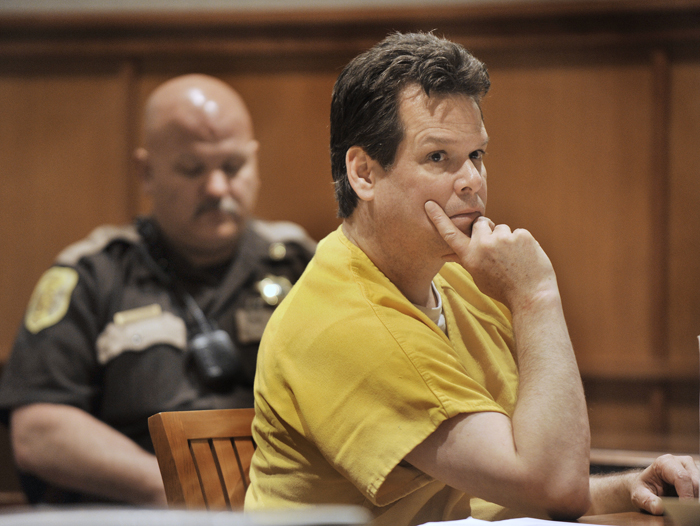PORTLAND — Dennis Dechaine is in court today making a bid for a new trial.
Dechaine is now serving a life sentence for the 1988 murder and kidnapping of 12-year-old Sarah Cherry in Bowdoin.
Dechaine’s lawyer, Steve Peterson, is trying to convince Superior Court Justice Carl O. Bradford that the jury would not have convicted him had they been presented with DNA evidence extracted from a clipping of the girl’s left thumbnail. Testing indicates that the victim’s blood as well as a partial DNA profile from an unknown male donor are present on the nail clipping.
The defense says the DNA points to an alternative suspect. The prosecution, meanwhile, argues that the current precautions to guard against DNA contamination were not in place at the time and that the clippers at the autopsy were the likely source of the DNA.
So far today, the defense has called witnesses whose testimony speaks to the chain-of-custody of the nail clipping. Some of the events described took place nearly 24 years ago.
John Otis, a state trooper at the time of the crime, described how the victim’s hands would have been covered in paper bags to protect them from contamination. His notes from the time did not indicate what sort of container they would have been placed in during the autopsy, but he said such evidence normally would have been placed in some sort of receptacle to bring back to the state crime lab. Deputy Attorney General William Stokes showed him a photograph of ungloved hands holding the girl’s bound hands, apparently propping them up for the camera.
Carol Waltman, a friend of Dechaine’s, described how she got in touch with the New York-based Innocence Project. She testified about the procedures she followed to maintain the chain-of-custody of Dechaine’s blood sample and hairs sent to the lab.
Thomas Connolly, Dechaine’s trial lawyer, explained how he retrieved the nail clipping from the courthouse in Rockland in 1992 after learning that evidence in the case was to be destroyed. Connolly had the clipping tested before returning them to the state 13 months after he came into its possession.
Send questions/comments to the editors.



Comments are no longer available on this story